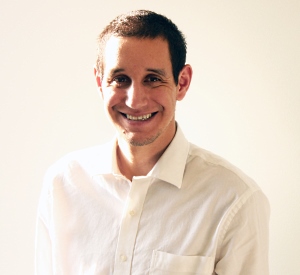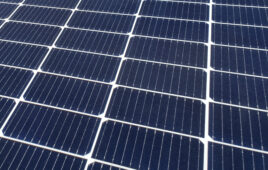Following the Feb. 25, 2014, Webinar “How to Choose and Care for Your Solar Inverter,” Solar Power World’s Managing Editor Kathie Zipp conducted a Q&A session with the two presenters: J.S. Roy, VP of solar development at Beacon Power Services and Daniel Ithurburn, design engineer at Martifer Solar (a Solar Power World Top 250 Contractor), featuring reader-submitted questions.
Kathie Zipp: Can you define what STC means in regard to testing and why it’s important?
J.S. Roy: Sure, STC is Standard Testing Conditions, which is 1000 watts per meter squared, 25°C is the panel temperature, and a certain number of atmospheres, I think 1.0. When you’re getting a 200 or 260-watt solar panel, the nameplate capacity is always listed as standard testing conditions. Now, standard testing conditions don’t happen all that often, which is why California came up with PTC, which is actually more reasonable. It’s 800 watts per meter squared, a higher temperature, and more atmospheres. You can actually exceed STC conditions. I’ve seen it happen. Think about it as the best conditions for a solar panel.
Kathie: Are there third party organizations available where people can get information on inverter reliability?
Daniel Ithurburn: A lot of the magazines have information on this, including Solar Power World, as well as if you actually pay for some studies. You probably can go to Black & Veatch or BEW to get some of this data. Some of the inverter manufacturers will give you reliability studies. As long as it’s backed by a third party, I don’t usually have a problem taking it. But if it is information directly from the inverter manufacturer I use that as a best case scenario.
Kathie: What recommendations would you make when replacing filters? Where are the filters located in a solar project?
Daniel: Filters can be located on a big central inverter since usually they have a large air intake. This keeps dust from getting inside of the electronics. Some of the inverters have sealed units and they don’t really have filtration. It just depends on the type of inverter that you are using. Some have intakes at the bottom, other have them at the top..
Kathie: Are there limitations on how much or how long inverters can be clipped in response to PPA requirements? Some operators require you to curtail production to 20% of the full output. Does this hurt the inverters in your opinion?
Daniel: I don’t think it matters as much to the PPA providers, as long as you share with them how much it’s clipping and how much energy they may be losing as a result of the clip. You can see that amount by doing the PVSYS reports, versus doing it from some of the more PV watts, where it doesn’t really take into account how much clipping you might actually have.
The inverter has to get rid of the energy somehow. Usually it heats it up. In some cases, it will move the power point tracking voltage to a point where it’s outside, so the heat then shifts towards the modules. Ultimately, I think it does hurt the array as a whole, not necessarily the inverter.
Kathie: Are there any situations where you would use central and microinverters, kind of a combination of different types of inverters in one project?
J.S.: I’d have a tough time thinking of a project where that would make sense. If you’re talking a small project with multiple orientations, small strings, microinverters, or even DC optimizers would work fairly well. If you’re talking larger projects, utility scale, multiple megawatts…in Europe they tend to do more string inverters for that, but I’d have a tough time using something other than a large central inverter. Honestly, the only project I’ve ever done where there were multiple types of inverters on the project, was when we did a small array on the operations and maintenance buildings for a wind farm. So the PV system had microinverters, and the wind turbines had large centrals.
Kathie: How do inverter maintenance techniques or considerations differ from climate to climate? For instance, what different maintenance might you do in a hot climate compared to a colder climate with snow and ice?
J.S.: The temperature difference would play into effect when selecting the inverter up front, and how much overloading you can handle. If you are in a cooler climate, these things tend to fail the warmer it gets. And since you’re putting power through that, it will just warm up. So, colder climates will tend to overload the inverter more than a warmer climate.
As far as maintenance of the inverter, the only thing that would affect how I went about doing maintenance on a central or a string is if it was a dustier climate than most, say Arizona in the desert. I would check my filters more versus if I were in a more humid climate like New Jersey or the New England area. Daniel?
Daniel: You might want to check the internals more often in high humidity environments because you may see higher corrosion rates of terminals and connections, etc. So, that might mean you have to recommission the inverters a little more often than you would in a drier climate.
Kathie: Can you tell us what might be the maintenance advantages of using microinverters on a large project?
J.S.: Sure. I’ll point to one of my previous projects to give you an idea of where I’m coming from. In the fall of 2009 or 2010 we commissioned a 347-kilowatt microinverter project, which stood as the largest microinverter project for almost two years after we commissioned it. I was responsible for the maintenance of that project for a while. We also had a 250-kilowatt central inverter project that we commissioned nearly at the same time; these projects ran in parallel.
From a microinverter point of view, because of all the data, my maintenance plan for that project differed very little from a 25-kilowatt project of microinverters. I had little preventative maintenance. My guys would go there and, within the span of 3 or 4 hours, they would be completely done with preventive maintenance.
On the flip side, with the large central inverter project, we actually spent more time in preventative maintenance, checking open circuit voltage, running IV curve traces, and all the preventive maintenance on the inverter itself. With the microinverter project, I always knew exactly what was going on, whereas with that central inverter project, I was always trying to figure out if there was an issue. Actually, both these systems performed very well. So when it comes to the performance side, I think the microinverter project beat the central inverter project by 2% above what was expected. Granted, these were several states apart, so it might have been just a weather difference. So to sum up, your preventative maintenance on the microinverter will take less time than it would on the central inverter project.
Kathie: Daniel, do you have anything to say on the other side of that? Maybe a project where you used a large central inverter and explaining the maintenance of that?
Daniel: Once you start these larger arrays, sometimes you will run into a little bit more finicky problems with the big central inverters just because there’s more complexity going into the inverter. But once they get moving, the maintenance side of it is pretty low. I do recommend recommissioning the inverter at least yearly, as well as doing the stream voltage testing and IV curve testings and all that as well, to start spotting problems with the modules. But at least in my experience, the total costs are still much less to use the central inverters, especially on very large arrays, maybe not so much on a smaller rooftop.
There are tradeoffs to either system. Either you have the granularities and can see the data using the microinverters, or you have no granularity and you actually have to go out and test it often. And you’re going to have to troubleshoot it, which takes a little more time to do so.
Read more in How To Calculate Solar Reliability







Tell Us What You Think!